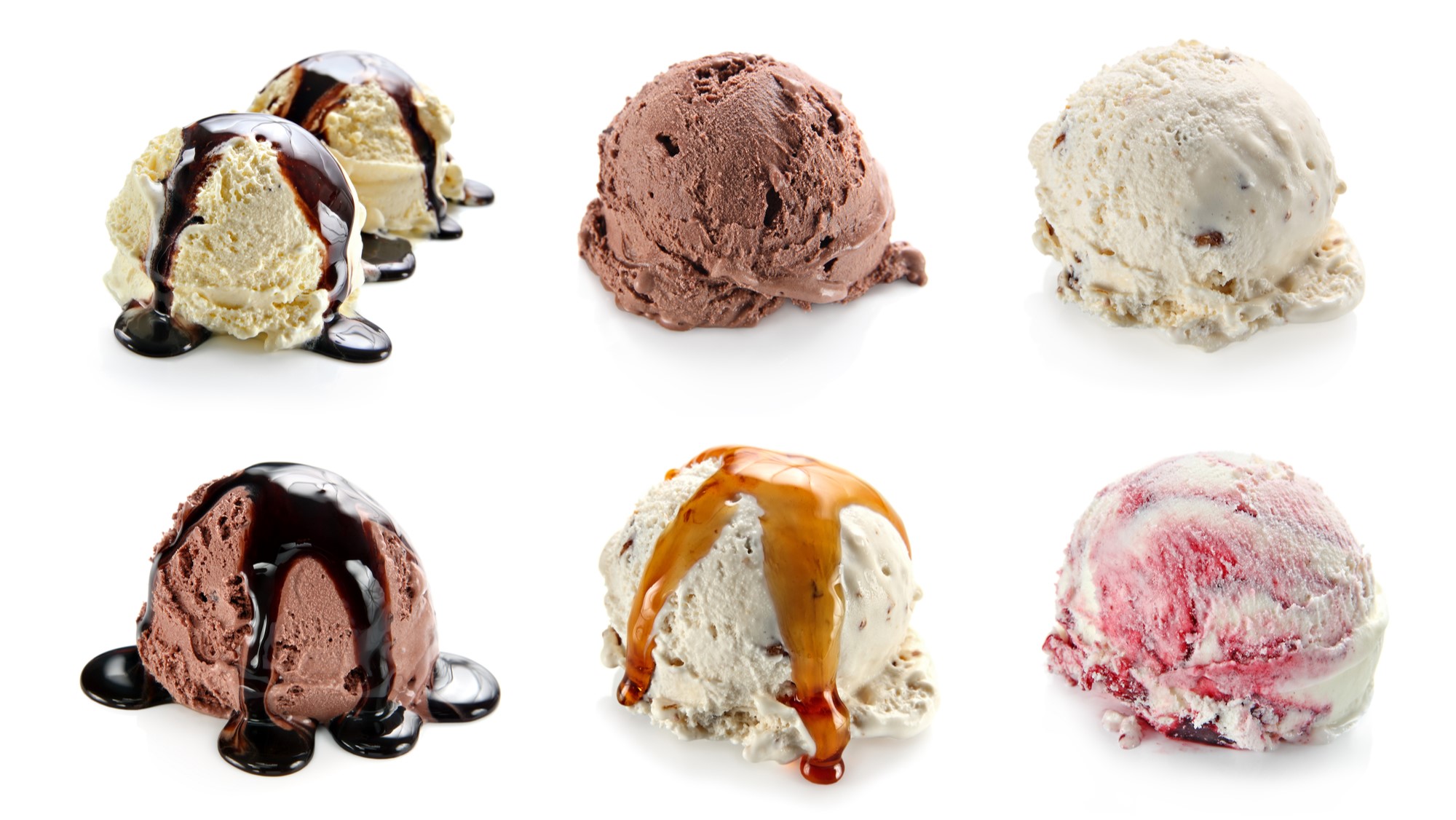

Ice cream is America’s favorite dessert—and for good reason. From homestyle vanilla to matcha green tea, there seems to be no end to the combinations you can add to your cone. And while a double scoop of chocolate chip cookie dough ice cream with hot fudge syrup sounds absolutely mouthwatering, this guilty pleasure is something you might regret the next day.
This doesn’t mean that eating ice cream automatically makes you unhealthy. The trick is being smart in knowing what kind to choose—certain ice cream-making methods use less sugar, fat, and dairy. It all boils down to the texture and ingredients of this delicious frozen dessert.
What’s the healthiest type of ice cream?
Let’s start with the very definition of the treat. According to the International Dairy Foods Association, “ice cream is a frozen food made from a mixture of dairy products, containing at least 10 percent milk fat.” Based on this definition, popsicles and frozen yogurt do not qualify as ice cream.
When people think of ice cream, three types come to mind: soft serve, hard ice cream, and gelato. Gelato (also the Italian word for ice cream) is usually considered a healthier option than soft serve and hard ice cream. The refreshing dessert is specifically made with a higher proportion of milk to cream, creating less fat than traditional ice cream, says Mary Sabat, a nutritionist and owner of BodyDesigns by Mary. It also has a higher protein content than soft serve and hard ice cream.
While still high in sugar and calories, gelato typically comes in a smaller serving size than soft serve and regular ice cream. “Portion control plays a significant role in the overall healthiness of ice cream consumption,” explains Sabat. Since gelato is made with a denser texture, she says it is typically served in smaller scoops than the other frozen desserts, which helps manage caloric intake.
[Related: The best ice cream makers of 2023]
Next comes soft serve and hard ice cream. Though there isn’t a major nutritional difference between the two, soft serve ranks a little better. Sabat says it often has a high amount of air, which reduces the fat content per serving. But ice cream can also vary wildly in its fat and sugar content depending on the brand. One example is Halo Top, which is known for its low-calorie, high-protein, and low-sugar products, says Dan Gallagher, a registered dietitian at Aegle Nutrition.
While technically not ice cream, we would be remiss not to mention sherbet and sorbet, two other popular summer options. These frozen treats are made of fruit puree, sugar, and other flavorings, with sherbet containing some dairy. A cup of sherbet or sorbet ranges from 160 to 200 calories and typically comes with natural fruit. But they can also pack other additives like artificial flavors and high fructose corn syrup. The high sugar content might even make them equivalent in calories to some store-bought ice cream.
When in doubt, experts say to check the nutritional label when choosing between different desserts at the grocery store. Most ice cream shops will let you see the list of ingredients on request, too.
What about dairy-free or vegan ice cream?
Dairy-free or vegan ice cream is not always the healthiest option, warns Melissa Wasserman Baker, a registered dietitian nutritionist and founder of Food Queries. In lieu of milk, some brands may compensate by adding extra sugar and unhealthy fats like coconut oil.
Instead, Baker says people should choose these kinds of ice creams based on their dietary preferences and needs. Vegan ice cream is made without animal-derived ingredients and would be a good choice for those following a more restricted lifestyle. Vegan ice creams may also benefit people with allergies to lactose and eggs.
Is it bad to indulge?
If you’re searching for a health-conscious ice cream, both Sabat and Baker recommend looking at the portion size, quality of ingredients, and sugar content before digging in.
“Many ice cream varieties contain added sugars, which can lead to increased calorie intake and potential health issues like weight gain, diabetes, and tooth decay,” Sabat says. Avoid ice creams with added preservatives, including high-fructose corn syrup and hydrogenated oils. You’ll also want to stay away from the popular keto ice creams, which substitute sugar for artificial sweeteners like Splenda, NutraSweet, or sugar alcohols like erythritol. These types of sugar additives pose several health risks, such as disrupting the balance in your gut microbiome and exacerbating heart conditions. Instead, Baker suggests looking for low-sugar ice creams or those sweetened with natural alternatives such as stevia or fruit extracts.
[Related: Is high-fructose corn syrup worse than sugar?]
Compare the nutritional labels of different brands and pay extra attention to the fat content, sugar content, and total calories. “Traditional ice cream often contains significant amounts of saturated fat, which can contribute to elevated cholesterol levels and increase the risk of heart disease,” explains Sabat. Opt for ice creams with lower amounts of all three components and be wise about picking candies, syrups, and other high-calorie toppings, as they can significantly up the calorie count and sugar content.
All in all, you don’t have to sacrifice your wellbeing to enjoy America’s favorite dessert. A frozen treat every once in a while will not jeopardize a balanced diet, especially if you choose a healthier option. Baker says that “moderation and mindful choices can help balance the enjoyment of ice cream with a health-conscious approach.”
